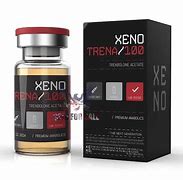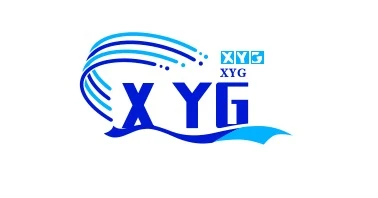
News
Jun . 13, 2024 04:24 Back to list
Choose GHRP-2 or GHRP-6 for peptide therapy.
Understanding GHRP-2 and GHRP-6 Two Key Players in Peptide Therapy
Growth Hormone Releasing Peptides (GHRPs), specifically GHRP-2 and GHRP-6, have gained significant attention in the realm of scientific research and therapeutic applications due to their unique ability to stimulate the release of Growth Hormone (GH) from the pituitary gland. These synthetic peptides, though similar in function, exhibit distinct characteristics that set them apart.
GHRP-2, also known as Hexarelin, is a potent GH secretagogue with high specificity for the Growth Hormone Secretagogue Receptor (GHSR). It is known for its strong and selective stimulation of GH release, often surpassing the natural hormone Ghrelin. GHRP-2 has been found to increase GH secretion in a dose-dependent manner, making it an attractive option for clinical applications where GH levels need to be elevated, such as in the treatment of growth disorders or age-related decline in GH production.
On the other hand, GHRP-6, a hexapeptide, acts more broadly by not only stimulating GH release but also influencing appetite and metabolism. Unlike GHRP-2, it activates both GHSR subtypes, leading to a more complex response. GHRP-6 has shown potential in treating cachexia, a condition characterized by severe weight loss and muscle wasting, due to its appetite-stimulating properties. However, its use may be accompanied by side effects like increased hunger, which can be both a benefit and a challenge depending on the therapeutic context.
Both GHRP-2 and GHRP-6 have been studied extensively for their potential in anti-aging therapies, body composition manipulation, and athletic performance enhancement
Both GHRP-2 and GHRP-6 have been studied extensively for their potential in anti-aging therapies, body composition manipulation, and athletic performance enhancement Both GHRP-2 and GHRP-6 have been studied extensively for their potential in anti-aging therapies, body composition manipulation, and athletic performance enhancement
Both GHRP-2 and GHRP-6 have been studied extensively for their potential in anti-aging therapies, body composition manipulation, and athletic performance enhancement
Both GHRP-2 and GHRP-6 have been studied extensively for their potential in anti-aging therapies, body composition manipulation, and athletic performance enhancement
Both GHRP-2 and GHRP-6 have been studied extensively for their potential in anti-aging therapies, body composition manipulation, and athletic performance enhancement ghrp 2 or 6. However, it's crucial to note that their usage is strictly regulated, and their administration should always be under medical supervision.
Research continues to unravel the intricate mechanisms and full potential of these peptides. While GHRP-2 offers a more targeted approach to GH release, GHRP-6's multifaceted actions make it a versatile tool in certain therapeutic scenarios. As with any medical intervention, a thorough understanding of the individual's needs, potential risks, and benefits is paramount before considering the use of GHRP-2 or GHRP-6.
In conclusion, GHRP-2 and GHRP-6 represent two key players in peptide therapy, each with its own strengths and limitations. Their roles in modulating GH release, metabolism, and appetite highlight the promising future of peptide-based treatments, as long as they are used responsibly and within the boundaries of ethical medical practice. Further research is needed to optimize their therapeutic potential and address any associated concerns.
ghrp 2 or 6. However, it's crucial to note that their usage is strictly regulated, and their administration should always be under medical supervision.
Research continues to unravel the intricate mechanisms and full potential of these peptides. While GHRP-2 offers a more targeted approach to GH release, GHRP-6's multifaceted actions make it a versatile tool in certain therapeutic scenarios. As with any medical intervention, a thorough understanding of the individual's needs, potential risks, and benefits is paramount before considering the use of GHRP-2 or GHRP-6.
In conclusion, GHRP-2 and GHRP-6 represent two key players in peptide therapy, each with its own strengths and limitations. Their roles in modulating GH release, metabolism, and appetite highlight the promising future of peptide-based treatments, as long as they are used responsibly and within the boundaries of ethical medical practice. Further research is needed to optimize their therapeutic potential and address any associated concerns.
 Both GHRP-2 and GHRP-6 have been studied extensively for their potential in anti-aging therapies, body composition manipulation, and athletic performance enhancement
Both GHRP-2 and GHRP-6 have been studied extensively for their potential in anti-aging therapies, body composition manipulation, and athletic performance enhancement
Both GHRP-2 and GHRP-6 have been studied extensively for their potential in anti-aging therapies, body composition manipulation, and athletic performance enhancement
Both GHRP-2 and GHRP-6 have been studied extensively for their potential in anti-aging therapies, body composition manipulation, and athletic performance enhancement ghrp 2 or 6. However, it's crucial to note that their usage is strictly regulated, and their administration should always be under medical supervision.
Research continues to unravel the intricate mechanisms and full potential of these peptides. While GHRP-2 offers a more targeted approach to GH release, GHRP-6's multifaceted actions make it a versatile tool in certain therapeutic scenarios. As with any medical intervention, a thorough understanding of the individual's needs, potential risks, and benefits is paramount before considering the use of GHRP-2 or GHRP-6.
In conclusion, GHRP-2 and GHRP-6 represent two key players in peptide therapy, each with its own strengths and limitations. Their roles in modulating GH release, metabolism, and appetite highlight the promising future of peptide-based treatments, as long as they are used responsibly and within the boundaries of ethical medical practice. Further research is needed to optimize their therapeutic potential and address any associated concerns.
ghrp 2 or 6. However, it's crucial to note that their usage is strictly regulated, and their administration should always be under medical supervision.
Research continues to unravel the intricate mechanisms and full potential of these peptides. While GHRP-2 offers a more targeted approach to GH release, GHRP-6's multifaceted actions make it a versatile tool in certain therapeutic scenarios. As with any medical intervention, a thorough understanding of the individual's needs, potential risks, and benefits is paramount before considering the use of GHRP-2 or GHRP-6.
In conclusion, GHRP-2 and GHRP-6 represent two key players in peptide therapy, each with its own strengths and limitations. Their roles in modulating GH release, metabolism, and appetite highlight the promising future of peptide-based treatments, as long as they are used responsibly and within the boundaries of ethical medical practice. Further research is needed to optimize their therapeutic potential and address any associated concerns. Share
Latest news
-
Using tadalafil to promote hair growth and combat hair loss effectively.
NewsJul.10,2024
-
Generating a title similar to palmitoyl oligopeptide could be Oligopeptide containing palmitoyl for skincare benefits and rejuvenation.
NewsJul.10,2024
-
Similarity of the compound tra% 100mg/ml in different pharmaceutical formulations
NewsJul.10,2024
-
Negative impacts of tadalafil on health and well-being
NewsJul.10,2024
-
Anastrozole 0.5 mg twice per week for treatment of cancer patients
NewsJul.10,2024
-
Reviewing the effectiveness of kisspeptin in enhancing reproductive health and fertility.
NewsJul.10,2024
